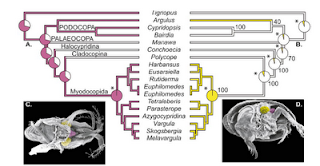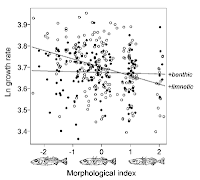As scientists, we’re all wrong, at least sometimes. The question is, how are we wrong?
The arsenic bacteria saga, which we’ve discussed on this blog
before, is turning out to be a very public example of failure in science. First announced by NASA press conference in December 2010, authors lead by Felisa Wolfe-Simon shared their discovery of a bacterium capable of replacing phosphorus in its DNA with arsenic, suggesting the possibility of life in phosphorus-limited conditions. This apparently momentous discovery was published in Science, and met with disbelief and severe criticism. Critics throughout the blogosphere and academic departments began to compile a comprehensive list of failings on the part of the paper—8 technical criticisms were published in Science—and as the result of the intense focus on the paper’s lead author is no longer associated with the lab group where this research was carried out. This is failure at its worst—the science was flawed and it drew immediate and intense censure. This is the kind of failure that most young scientists fear: judgment, intense criticism, career-long repercussions. But it’s also probably the least common type of failure in science.
However, it’s arguable that the saddest form of failure is the opposite of this: when a paper is right—innovative, ahead of its time—but somehow never receives the attention it deserves. There are lots of famous examples of scientific obscurity, with Gregor Mendel being the poster child for scientists who toil for years in anonymity. In ecology, for example, papers that considered species as equivalent (
a la neutral theory) to explain coexistence were around in the 1950’s-1960s, but received little attention. Other papers suggesting variation in environment as a possible mechanism for plant coexistence were published prior to
Chesson and Huntly's influential paper, yet essentially uncited. Most researchers can name at least one paper that foreshadows the direction the field will take many years later, yet is unacknowledged and poorly cited. There are many reasons that papers could be under recognized—they are written by scientists outside of the dominant geographical areas or social networks, or who lack the ability to champion their ideas, either in writing or in person. In some instances the intellectual climate may not be conducive to an idea that, at a later time, will take off.
If that is the saddest type of failure, then the best type of failure is when being wrong inspires an explosion of new research and new ideas. Rather than causing an implosion, as the arsenic-bacteria paper did, these wrong ideas reinvigorate their field. Great examples in ecology include Steve Hubbell’s
Unified Neutral Theory of Biodiversity, which although criticized rightly for its flaws, produced a high-quality body of literature debating its merits and flaws. When Jared Diamond (1975) proposed drawing conclusions about community assembly processes based on patterns of species co-occurrence, the disagreement, led by Dan Simberloff ultimately led to the current focus on null models. Cam Webb’s
hypothesis that there should be a relationship between phylogenetic patterns in communities and the importance of different processes in structuring those communities sparked a decade-long investigation into the link between phylogenetic information and community assembly. Although Webb’s hypothesis proved
too simplistic, it still informs current research. This is the kind of failure on which you can build a career, particularly if you are willing to continually revisit and develop your theory as the body of evidence against it grows.
However, the most common form of failure occurs when a paper is published that is wrong, yet no one notices or worse, cares. For every paper that blows up to the proportion of the arsenic bacteria paper, or inspires years of new research, there are hundreds of papers that just fade away, poorly cited and poorly read. Is it better to fail quietly, or to take the chance at public failure, with all its risks and rewards?













